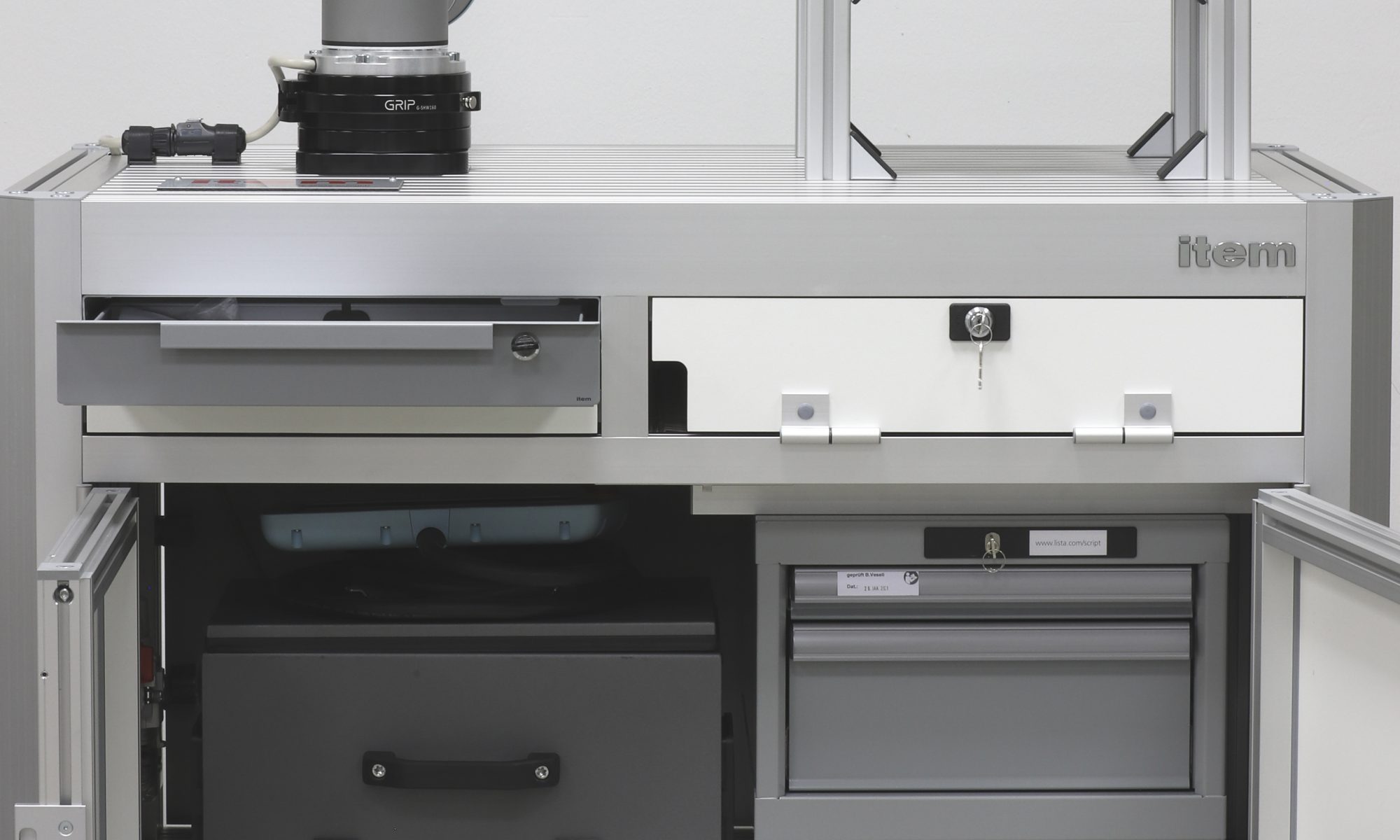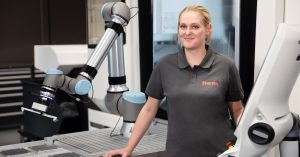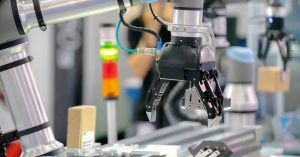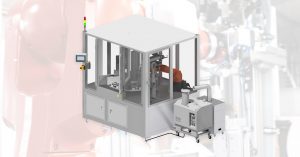How profile technology and special components for the robot environment make cobots even more accessible.
Lightweight robots such as cobots (collaborative robots) are not only extremely versatile and comparatively easy to program – they can also be easily integrated into existing production environments. The modular Building Kit System for cobot solutions from item offers a wide range of options for doing just that. As an item pluspartner and specialist in robot peripherals, GRIP GmbH Handhabungstechnik is very familiar with the possibilities that profile technology opens up for robotics applications. With that in mind, the focus of the new robot table from GRIP is on an elegant look, functionality and ergonomic handling. This creates an ideal working environment for using cobots. The aluminium profiles of Line XMS form the basis of the table frame, which features partitioned storage options. The control cabinet, control unit and other tools are stowed in drawers. This ensures they are reliably protected, while also being readily accessible. Using a special fastening system from GRIP to fully automate tool changes also significantly reduces changeover times.
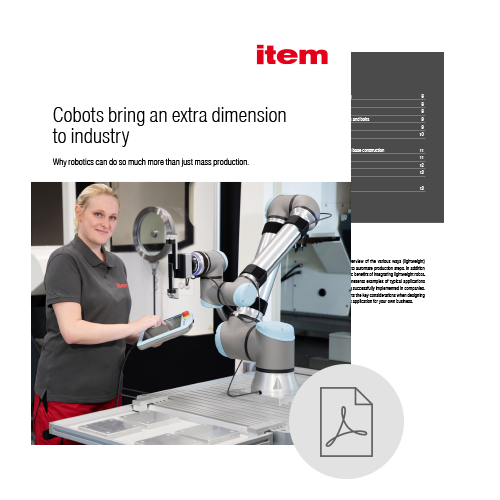
An overview of robot applications
Read our white paper to discover specific applications and other advantages of robotics in industry – and explore why lightweight robotics is a particularly worthwhile investment for small and medium-sized enterprises.
GET YOUR COPY NOW!
Geared towards robotics – from head to toe
Founded in 1989, Dortmund-based GRIP employs 40 people. The company specialises in developing components such as grippers and quick-change systems for robot peripherals. Its service portfolio also covers the project engineering and production of bespoke turnkey fixtures and specialist mechanical engineering solutions that are tailored to customer requirements. As a certified UR+ product partner, GRIP provides components that can be easily and conveniently combined with cobots from Universal Robots. GRIP has been lending its expertise in robot and handling technology to the item pluspartner network since 2013: “We use item profile technology to build all testing and assembly equipment. The Building Kit System is very versatile, so we also use it for specialised fixtures, enclosures, racks, guard-rails and work benches,” explains GRIP Managing Director Hasan Canti. That is why the new robot table is also based on item system components.
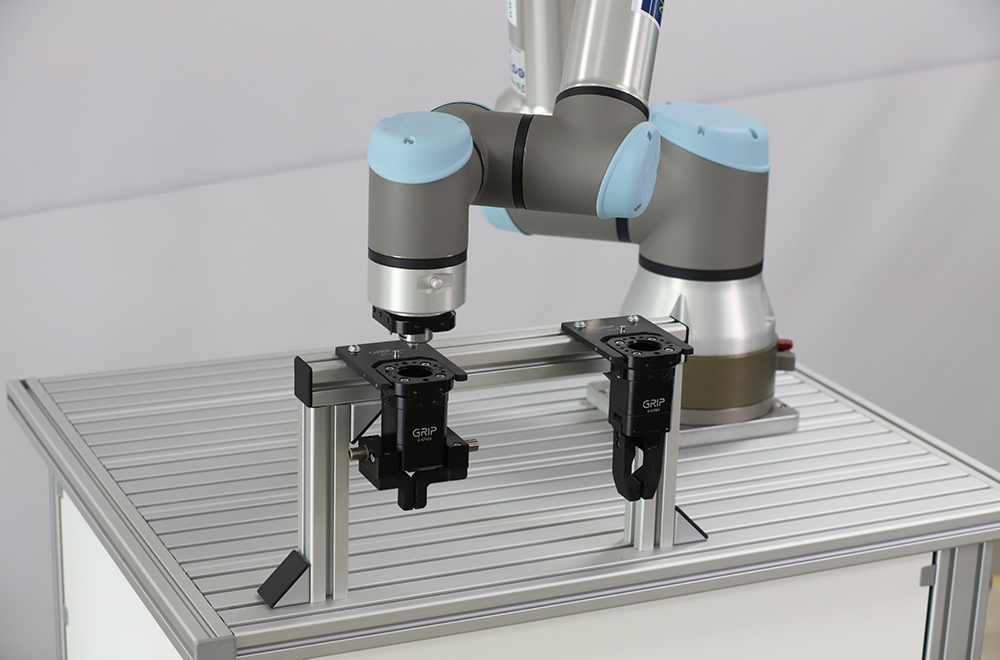
When developing the design, the main focus was on ensuring the table had multiple functions and a striking look – the perfect task for the profiles of Line XMS. To make it easier to transport, the table’s footprint of 1,200 x 800 mm was deliberately matched to the size of a europallet. The cobot can be fixed onto the Groove Plate quickly and easily – thanks to various item Mounting Plates for cobot integration and the Base Connector from GRIP. This quick-change system makes the task of connecting together the robot arm and table very straightforward, meaning the cobot can be fixed in place with absolute precision. In addition, a device made of aluminium profiles can be attached alongside the cobot, such as a holder for multiple GRIP grippers. Then, thanks to the GRIP Auto Connector, the cobot can quickly switch between various grippers for different applications. All this results in a robot table that offers the user end-to-end flexibility. Both the GRIP components and the modular structure based on item profile technology ensure the table can be easily adapted to specific requirements.
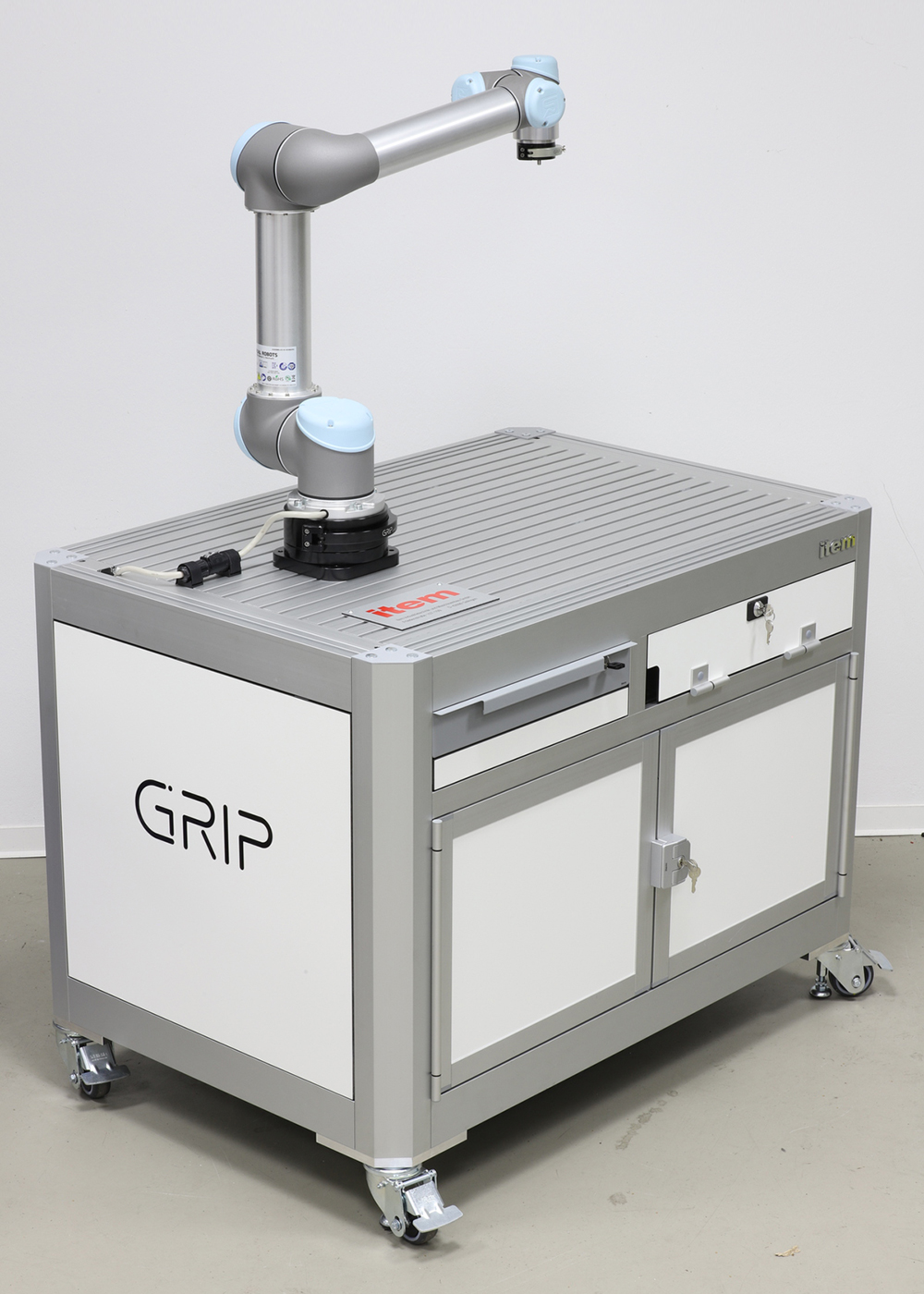
Customisable and expandable robot table
“Working closely with customer advisor Giuliano Longo and other employees from item, we developed an aesthetically pleasing and high-quality solution,” says Canti. Right from the start, the aim was to integrate all the robot technology and peripherals into the table without compromising the overall look. That is why the control cabinet, for example, is integrated into a drawer instead of being mounted in a position where it would be visible from the outside, as is usually the case. The drawer can be pulled out as required, and the lid of the control cabinet can be opened from above. This makes working on the terminals inside the control cabinet much more ergonomic and convenient. Instead of being fixed to the outside of the structure, the manual control unit for programming the cobot is also stowed in the drawer when not in use, keeping it well protected. It has a separate outlet, allowing for optimum cable routing. Another drawer provides space for tools, assembly sets and other components. The lower section of the robot table is ideal for storing additional technology and electronics – for the WLAN connection, for example. The table is also open at the bottom, allowing for ideal heat transfer.
Whether it’s in the form of enclosures, additional drawers, safety technology or lighting fixtures – the cobot table can be enhanced at any time.
Lockable doors protect vital equipment from unauthorised access. However, Canti doesn’t just appreciate the robot table for its practical features – he also likes its design: “The design is elegant with a clean, linear look, similar to a laboratory bench.” The table is fitted with Jacking Castors, meaning it can be fixed firmly in place on stable feet or pushed to different locations on the castors and set up there. In addition to the electrical connection, there is also an air supply connection for the pneumatic operation of the grippers and other end effectors. Although the standard version already offers numerous functions, there is a wide variety of modification and enhancement options. This is where the modular Building Kit System from item truly demonstrates its flexibility. For example, the control unit can, alternatively, be installed in a fixed place on the robot table. The versatile design options also bring a great deal of flexibility when it comes to structure. Whether it’s in the form of enclosures, additional drawers, safety technology or lighting fixtures – the table can be enhanced at any time. The table’s footprint can also be expanded as needed.
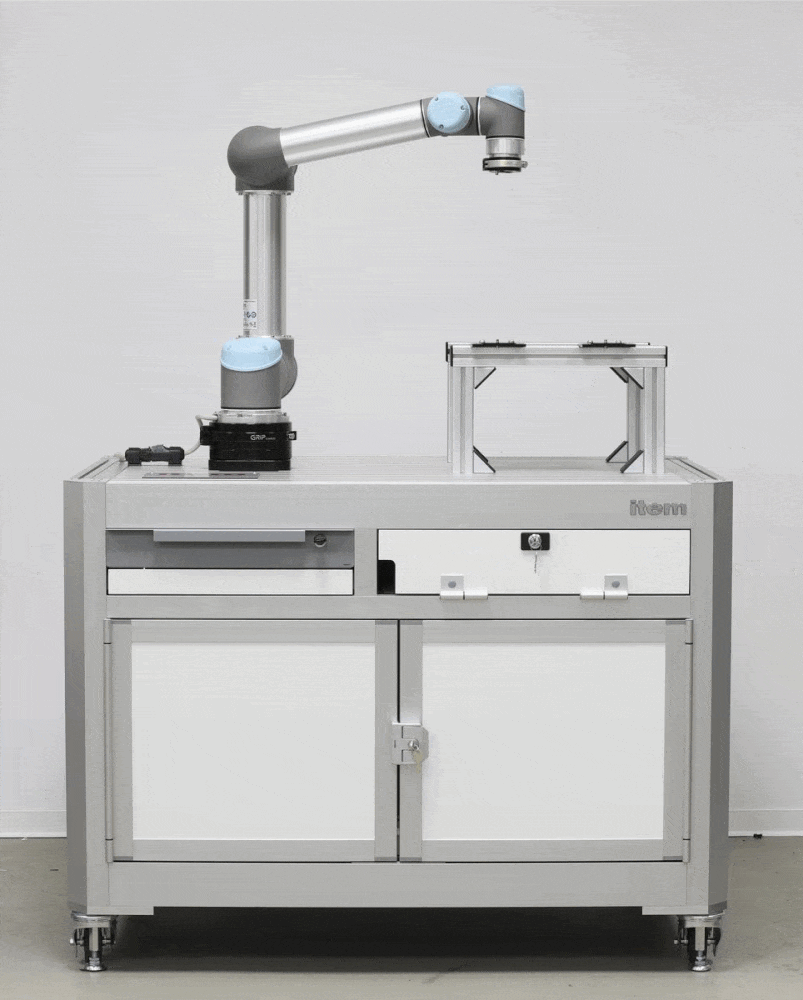
Trusting partnership and changeover time optimization with SMED
Praising the quality and support provided by item, GRIP’s Managing Director highlights a number of aspects: “The design of the table is timeless, the quality of the item components is second to none, and the product versatility is outstanding. item is constantly developing new components and boasts exceptional delivery reliability. Regardless of whether I order ten or 1000 components, I receive my order within 48 hours.” item is still able to keep this Germany-wide delivery promise despite the serious aluminium shortage in 2022. On top of that, the GRIP team appreciates the technical support item offers, as well as the expert assistance and the high degree of professionalism it receives as an item pluspartner throughout the planning and implementation stages of its projects. Thanks to the straightforward user interface, placing orders in the item Shop is also particularly easy.”
Regardless of whether I order ten or 1000 components, I receive my order in Germany within 48 hours.
GRIP is hoping the robot table will obtain a UR+ certification. That would see the company contribute another official product to the Universal Robots ecosystem. Anyone with an interest in utilising lean production methods to optimise processes may appreciate a previously certified product known as the GRIP Auto Connector, which is a testament to how well lean production and robotic applications go together. That’s because the GRIP Auto Connector is based on the SMED (Single Minute Exchange of Die) system, which aims to systematically reduce changeover times. The innovative GRIP Auto Connector does just that with its fully automatic tool changing mechanism. The system uses the movement of the robot itself, meaning no external energy in the form of compressed air or electricity is required.
Want all the latest updates on innovative robotics applications? Simply subscribe to the item blog by completing the box at the top right.

